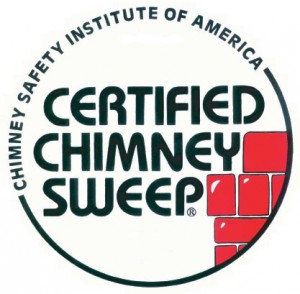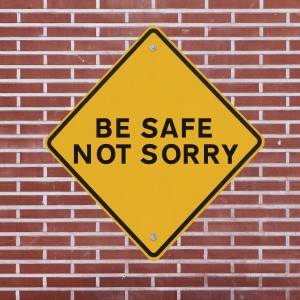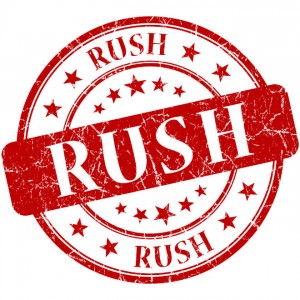
Jack Pixley Sweeps uses a chim-scan camera on each chimney flue 6″ or greater
When one of our Chimney Safety Institute of America (CSIA)-certified technicians from Jack Pixley Sweeps visits your home to perform your annual chimney inspection, we are certain you will be impressed and very satisfied with our special touch to the inspection: the Chim-Scan Closed Circuit Internal Evaluation System. Without this video technology, the inspector cannot see every inch of your chimney’s interior. Nor can he show you exactly what is wrong with your chimney. With the Chim-Scan camera, we can examine every area of your chimney, and we will show you the video footage after the inspection and explain our findings to you. We would like to tell you more about this phenomenal technology and why an inspection using the closed circuit Chim-Scan camera is so much better than one without this technological tool.
What Is a Chim-Scan?
According to the Estoban Foundation, the company that developed and manufactured this product, a Chim-Scan is a remote imaging apparatus designed to be raised or lowered into a chimney that provide the viewers, such as the chimney inspector and the homeowner, the ability to see every inch of the interior of a chimney up close. Via the Chim-Scan Closed Circuit Internal Evaluation System, the inspector and the homeowner have a view of areas that cannot be seen by regular visual means.
Why Is Using a Chim-Scan During a Chimney Inspection So Important?
Since the Chim-Scan camera can see every inch of your chimney’s interior, we may discover damage that would have been missed without a Chim-Scan. Damage to the inside of your chimney typically needs repairing before your fireplace can be safely used. Cracks in any part of your flue allow the toxic gases from combustion to leak out into your home. If you continue to have fires when your flue is cracked, you run the risk of further cracking due to parts of the flue not being protected from the heat of combustion. A Chim-Scan can also provide you with photographic and/or video evidence of damage if needed for insurance purposes.
What Are Other Benefits of the Chim-Scan Closed Circuit Internal Evaluation System?
Not only does a Chim-Scan find “hidden” flue damage, but it can also be used to diagnose chimney fire damage, find “patch” jobs done by amateurs, and indicate the presence of animals and/or their nests inside a chimney. Especially important after a chimney fire, it can help indicate the cause of the fire, how much damage occurred in the fire, and thoroughly document the situation for an insurance claim. After the scan has been conducted, there are different types of media you may receive including written reports, pictures, and video recordings.
Are you interested in the most thorough chimney inspection you can have? Contact Jack Pixley Sweeps to schedule your annual chimney inspection with the benefits of a Chim-Scan camera.

Not sure what a chimney crown is or why it’s important? Learn why below!
In the past, we have had customers come to us to fix what other companies have previously repaired. Not only does this cost them far more money in the long run, but it also typically means their chimney has been further damaged. When it comes to chimney repairs, the lowest bid does not always equal the best service.
What are chimney crowns?
A chimney crown, sometimes known as a chimney wash, is the slab that covers the top of the chimney structure. Chimney crowns are important because they protect both the interior and exterior chimney structure from the elements. An improperly installed or damaged chimney crown can expose the interior of the chimney and fireplace to rain, snow, and other moisture while simultaneously exposing the brick and mortar of the chimney itself.
What to look for in a chimney crown
Although they can be difficult to inspect from the ground, there are several hallmarks of good chimney crowns that homeowners should be aware of. The first is the overhang, or drip ledge. To prevent water from flowing directly onto the masonry of the chimney structure, chimney crowns should have a drip ledge of at least 2 to 2.5 inches on all sides. These overhangs serve as miniature gutters, protecting the brickwork and mortar from direct exposure to rain and snow.
Another detail to look for is the material the chimney crown is made of. While regular masons may be qualified to lay bricks and mortar for a chimney, the same materials should never be used for the chimney crown itself. Because brickwork and mortar are porous materials, they should never be used to construct a chimney crown. If your chimney crown is made of mortar, it will quickly crack and deteriorate due to exposure to the elements. Instead, crowns should always be constructed from solid metal, stone, or concrete slabs.
Chimney crown supporting structures
While not technically part of a chimney crown, chimney flashing is an important structural element that also helps prevent moisture from entering a chimney structure. Even with a properly sized overhang, flashing is an additional layer of protection against the elements. Often made of metals such as aluminum, galvanized steel, or copper, flashing is designed to create a waterproof seal between the chimney and the roof itself.
However, flashing is often improperly installed which may cause the waterproof seal to be broken. Roofers often use too many nail holes, creating tiny crevices from rain and snow to gain access to the brick and mortar underneath. Likewise, over time the flashing may become loose or damaged, especially in areas prone to severe weather.
At Jack Pixley Sweeps, we can do more than just clean and inspect your fireplace. Our masons are specially trained to craft chimney crowns that are constructed with extreme attention to detail. While our services may not always be the least expensive, our chimney crowns are guaranteed to protect your chimney and last for years to come.
Most consumers like to shop around to ensure that they are getting the best price. For many, this same mentality applies when looking for a chimney sweep. When choosing a chimney sweep company, however, the least expensive company might not be the best choice.
While it may be tempting to go with the company who offers the cheapest quotes and services, there are a number of factors that homeowners should consider before choosing a company to clean, maintain, and repair their chimney or fireplace.
Why choose a certified chimney sweep?
 Although sweeping a chimney may seem like a relatively simple job, it is important to ensure that you are working with a CSIA, or Chimney Safety Institute of America, certified sweep. Hiring a CSIA certified chimney sweep guarantees that you are working with a highly trained and competent professional who is up to date on and comfortable using the most advanced techniques and technology in the industry. All of the technicians from Jack Pixley Sweeps are members of the National Chimney Sweep Guild and certified by the CSIA.
Although sweeping a chimney may seem like a relatively simple job, it is important to ensure that you are working with a CSIA, or Chimney Safety Institute of America, certified sweep. Hiring a CSIA certified chimney sweep guarantees that you are working with a highly trained and competent professional who is up to date on and comfortable using the most advanced techniques and technology in the industry. All of the technicians from Jack Pixley Sweeps are members of the National Chimney Sweep Guild and certified by the CSIA.
While there are competent companies without their CSIA or NCSG certifications, this may indicate that a chimney sweep is not fully trained or knowledgeable enough to successfully and accurately clean and assess the condition of your chimney or fireplace. Likewise, those with their CSIA certification are held to higher standards both in terms of professionalism and level of knowledge.
Chimney sweeps should do much more than just remove creosote residue and debris during an annual cleaning. Certified sweeps perform a number of additional duties during their inspections, including inspecting the inside and outside of the fireplace system for signs of deterioration, making sure there is no potential risk of carbon monoxide exposure, and even evaluating fireplace and chimney efficiency. A less expensive or less knowledgeable company may leave out these necessary services in an effort to save themselves time and money.
Choosing the right company
In an area where there are multiple chimney sweep companies to choose from, it is important that homeowners make educated and informed decisions about who they trust with the care and upkeep of their fireplace systems. To help homeowners in their decision making process, the CSIA has provided a list of questions to ask prospective chimney sweep companies.
How long has your company been in business?
- Can you offer current references?
- Does your company have unresolved complaints filed with the city, state, or Better Business Bureau?
- Do you have business liability insurance to protect against accidents?
- Will a CSIA Certified Chimney Sweep will be on the job site?
While it may seem like an excellent way to save a few dollars, going with the cheapest chimney sweep company may lead to future problems. Incorrectly cleaned and maintained fireplaces and chimneys could lead to costly repairs as well as pose a potential safety and health hazard. With an A+ rating from the Better Business Bureau and countless reviews from satisfied customers, you can trust Jack Pixley Sweeps to get the job done right – the first time.

Use only a certified chimney sweep like Jack Pixley Sweeps to work on your chimney system
Fireplaces are an important part of our homes. In addition to serving a decorative or aesthetic purpose, they add value to a house and can serve as a reliable heat source during cold winter months. Despite the importance of proper fireplace and chimney maintenance, many homeowners neglect to complete necessary annual cleanings or attempt to do it themselves.
While DIY projects are a great way to save money on many household projects, cleaning a chimney system is not a project that should be undertaken by the average weekend warrior. By hiring a certified professional, homeowners can guarantee that their chimneys and fireplaces will last for years to come.
Why use a certified chimney sweep?
Just as you would not go to a dentist for a broken leg, it is not recommended to hire a regular renovation company to clean, update, or repair a broken fireplace or chimney. Hiring a certified chimney sweep ensures that the person servicing your chimney system is a trained professional who is up to date with the latest technology, standards, and techniques in the industry.
Most reputable companies will have chimney sweeps certified by the Chimney Safety Institute of America, or CSIA. With over 1,400 CSIA certified chimney sweeps in North America, it is easy to locate one of these highly trained professionals to service your chimney system. The technicians from Jack Pixley Sweeps are certified by both the CSIA and the National Chimney Sweep Guild.
What can I expect from a certified chimney sweep?
CSIA certified chimney sweeps are held to a higher level of knowledge and professionalism than others working in the industry. Because of this, you can expect your chimney sweep to be knowledgeable about the most recent advancements in chimney, fireplace, and venting safety along with the local building codes and manufacturer’s instructions for newly installed appliances.
Certified chimney sweeps should also act in a professional manner, including taking the time to explain how the cleaning process works, answering any questions you may have, and ensuring that furniture, carpets, and any other home décor is properly protected before beginning. Sweeps will evaluate both the interior and exterior of your chimney system, employing tools like the traditional chimney brush along with more modern technology such as vacuums, cameras, and other electronics.
Why is an annual inspection important?
An annual chimney inspection or cleaning is a chore that many homeowners tend to put off or ignore. Because of this, many small problems that could be easily and inexpensively fixed are not found until they become much bigger, more expensive, and more labor intensive problems.
“A chimney inspection is like an annual dental check-up,” says Ashley Eldridge, Director of Education for the CSIA. “It’s preventative maintenance that helps minimize potential hazards.” Additionally, the National Fire Protection Association Standard 211 says, “Chimneys, fireplaces, and vents shall be inspected at least once a year for soundness, freedom from deposits, and correct clearances. Cleaning, maintenance, and repairs shall be done if necessary.”
A certified chimney sweep will be able to not only clean and maintain your fireplace system, but will also be able to identify any areas in need of repair or those that many deteriorate in the future. Sweeps are also able to diagnose the causes behind common issues such as drafty chimneys, water leakage, or animal entry.
After a winter of heavy use, most homeowners let their fireplaces fade into the background during the warm months of summer. For many, removing the remaining ashes, cleaning any stains, and wiping away soot leaves the fireplace ready for another season of use. However, fireplaces and chimneys should be swept by a professional annually to prevent any potentially hazardous buildup from becoming a far more dangerous issue down the road.
How often should my chimney be cleaned?
The CSIA, or Chimney Safety Institute of America, advises that chimneys be swept any time there is a sooty buildup in excess of 1/8th of an inch inside a flue or fireplace. As determining the amount of buildup can be difficult for the average homeowner, the CSIA recommends that they should “be inspected at least once a year for soundness, freedom from deposits, and correct clearances” by a certified chimney professional.
What time of year is recommended for a cleaning?

If it involves a chimney or fireplace, you can count on Jack Pixley Sweeps to know how to install it, repair it, clean it, and/or bring it up to code and national safety standards.
Although many homeowners wait until the weather cools off to schedule a chimney sweep appointment, it is important to have your system inspected before it is used for the first time each fall. Scheduling an appointment during the warm summer months not only guarantees that a system is in working condition when the weather begins to cool off, but also ensures that homeowners beat the fall rush and can schedule an appointment at their convenience.
Why are chimney inspections important?
Having a professional inspect and clean your chimney each year is an essential aspect of home maintenance. Unlike an average homeowner – or even a handyman – chimney sweeps are professionally trained to look for imperfections, flaws, and/or cracks that may not be visible to the untrained eye. While all systems should be inspected annually, inspections are especially important in homes that have recently had any upgrades or changes to their fireplace systems, such as converting to gas logs or the addition of a fireplace insert.
If you have recently purchased a new home, it is recommended that you have a cleaning done in the summer or fall, despite the timeline given by the previous homeowners, as this allows you to establish a relationship with a chimney sweep company, as well as informs you of the exact condition of your fireplace, flue, and chimney components. In some cases, it may be possible to work with the same company as the previous homeowners.
Scheduling an annual appointment with the same provider allows someone to become acquainted with the condition of your particular system who can then check on it over time to monitor its progress. This familiarity ensures that any changes such as cracks or blockages are quickly detected and mended, preventing the need for emergency maintenance or costly major repairs. Likewise, staying with the same provider over a period of time often means you do not have to schedule an appointment each year; traditionally, companies send out reminders to their repeat customers to let them know that they are due for an annual inspection.

Contact us to learn more about how to protect your home’s masonry
Proper chimney care is something that’s often neglected by a lot of homeowners. What they don’t realize is the importance and benefits that a properly maintained chimney can bring to your home. In our many years of experience here at Jack Pixley Sweeps, we’ve been asked more times than we can count about the effects water can have on one’s chimney. So here’s a short guide that might be really helpful.
Water is your chimney’s enemy
According to the Chimney Safety Institute of America, water damage is the number one most common cause of majority of the reported chimney damages. Direct contact with water or even minor water penetration can increase the likeliness of damaging one or several of the materials in your chimney (i.e. metal, brick, stone, cast iron etc.).
The following are examples of the damage in your chimney and home’s interior and exterior structures caused by water penetration:
- Water stains in the ceiling and wall
- Rusting of the damper assemblies
- Decaying of the exterior mortar
- Cracked or damaged flue lining system
Water damage: Classified
There are three significant types of water damage that may occur in your home. Identifying which of the three is important in repairing and preventing the recurrence of the same damage.
Spalling – this type of water damage refers to the chipping, flaking or crumbling of your masonry chimney as a result of water penetration or contact. Your chimney would show flaking on the surface of the bricks and chimney crown. This is usually caused by the freeze/thaw cycle of water wherein the moisture present in the chimney area would freeze when there is a significant drop in temperature, and would begin to thaw again once temperature starts to go up.
Rust or Corrosion – this usually affects the metal parts and materials used for your chimney (such as the chimney flashing and cap). This is the first thing that chimney experts look for during an inspection because this is one of the most common water damage out there.
Mortar Joint Damage – this part of your chimney is highly susceptible to cracking. Because of this, it is also one of the common places to absorb moisture. Moisture content with the ideal environmental conditions can be a breeding ground for molds which would pose a health risk to you and your family.
What are you still waiting for? Now that you know the damages that water may cause, you should give Jack Pixley Sweeps a call and have your home and chimney checked before it’s too late.






